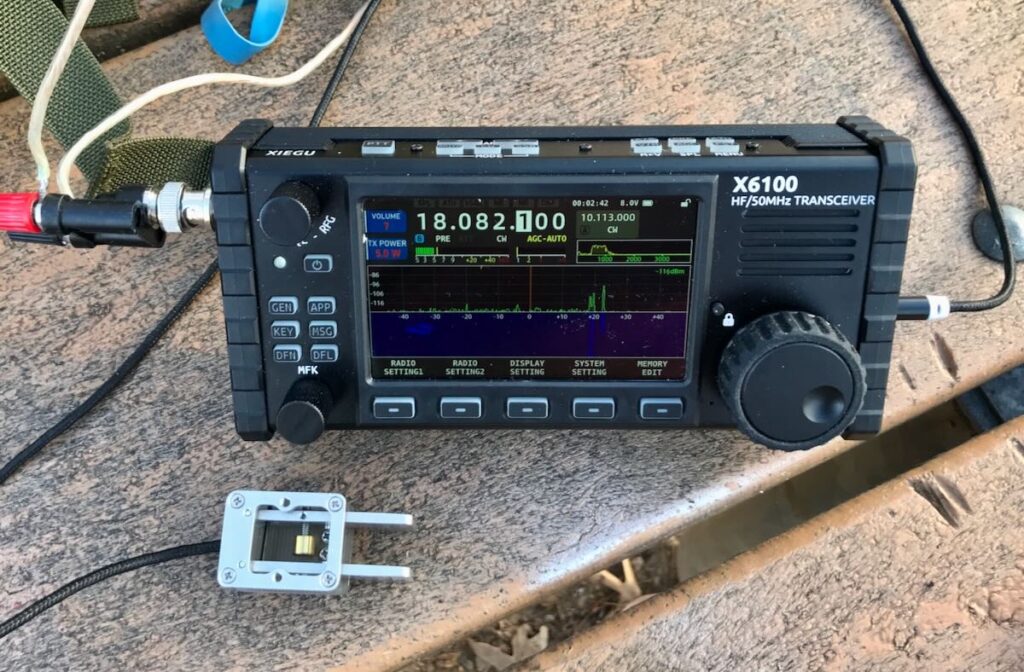 Late last year, Xiegu started shipping their latest portable rig: the Xiegu X6100.
Late last year, Xiegu started shipping their latest portable rig: the Xiegu X6100.
The X6100 is an all-in-one QRP SDR field transceiver. It sports an internal antenna tuner, internal Li-Ion rechargeable battery pack, and even an internal mic for hams who don’t want to carry the supplied mic to the field. For field operators, it’s in the very desirable “shack in a box” category. Just hook up an antenna and you’re on the air.
The X6100 got a lot of attention in the ham radio market because in many ways it resembles the Icom IC-705.
The X6100 sports top-mounted controls, a beautiful high resolution color display, and front-facing speaker. At $630 US, it’s less than half the cost of a new IC-705.
As with pretty much all modern SDR transceivers, the X6100 has variable filters and a general coverage receiver. The X6100’s receiver has gapless coverage from 0.5 MHz to 30MHz and 50MHz to 54MHz, thus covering the mediumwave and shortwave broadcast bands.
Radioddity sent me a loaner X6100 that I took delivery of on December 23, 2021.
Literally, the first thing I did was tune it to the 31 meter broadcast band.
While I’ve spent the bulk of my time with the X6100 in the field testing it as a QRP transceiver, in the shack I’ve done a fair amount of SWLing both in AM mode and (pirate radio stations) in SSB mode.
My assessment
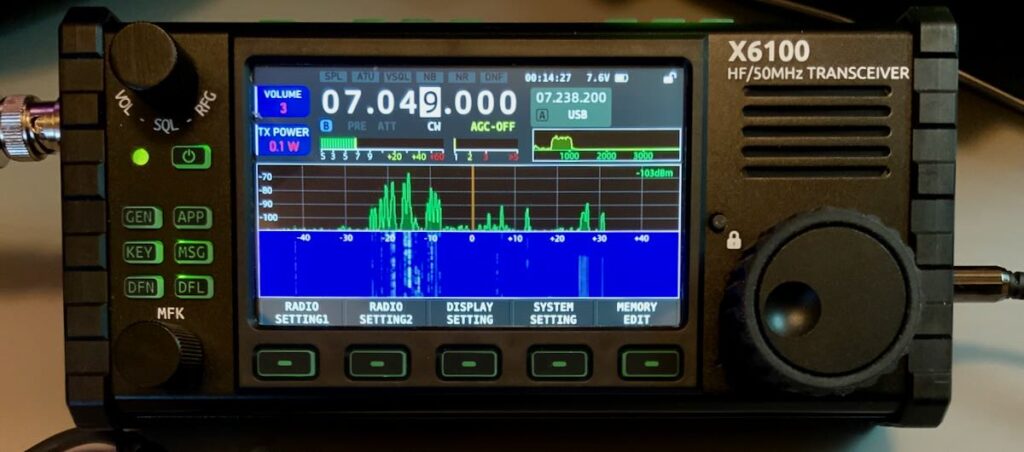 I’ve received a number of inquiries from SWLing Post readers about the X6100 asking how it stacks up to the IC-705 from an SWL’s perspective, so I thought I’d share my impressions so far to help guide any potential purchase decisions. I’ll provide much more detail in my upcoming review in The Spectrum Monitor magazine (likely in March or April 2022).
I’ve received a number of inquiries from SWLing Post readers about the X6100 asking how it stacks up to the IC-705 from an SWL’s perspective, so I thought I’d share my impressions so far to help guide any potential purchase decisions. I’ll provide much more detail in my upcoming review in The Spectrum Monitor magazine (likely in March or April 2022).
In short: I would not buy the Xiegu X6100 specifically for shortwave broadcast listening.
While the frequency coverage is ideal, the variable filters are useful, and the color spectrum display and waterfall (in terms of the interface) are benchmark, the radio has a few cons from an SWL perspective:
- I have noticed imaging on the spectrum display as I tune through the broadcast bands (shortwave and mediumwave). I seriously doubt this is something that can be addressed in firmware.
- The X6100 does not have a robust front-end. A number of my readers on QRPer.com who live near strong broadcast stations have noted that it’s almost unusable from home.
- The audio is typical of Xiegu radios, meaning it’s unrefined and a bit harsh. I find it a bit fatiguing over extended listening sessions both using the internal speaker and headphones.
In fairness, the X6100 wasn’t designed with the SWL in mind.
With the negatives out of the way, the X6100 is very much a usable radio for casual broadcast listening. You might even be able to push it into a little DX action as well. If you plan to purchase the X6100 for ham radio activities anyway, consider broadcast listening as a bit of “icing on the cake.”
X6100 vs. IC-705 from an SWL’s perspective
I’ve been asked specifically about how the X6100 compares with the IC-705 in terms of shortwave and mediumwave listening.
 There’s really no competition: the IC-705 is better than the X6100 by orders of magnitude in this regard.
There’s really no competition: the IC-705 is better than the X6100 by orders of magnitude in this regard.
The IC-705 is a high-performance radio with receiver qualities that would please most serious DXers. (Check out some of 13DKA’s reports!). That level of RX performance and filtering comes with a $1,300 US price tag.
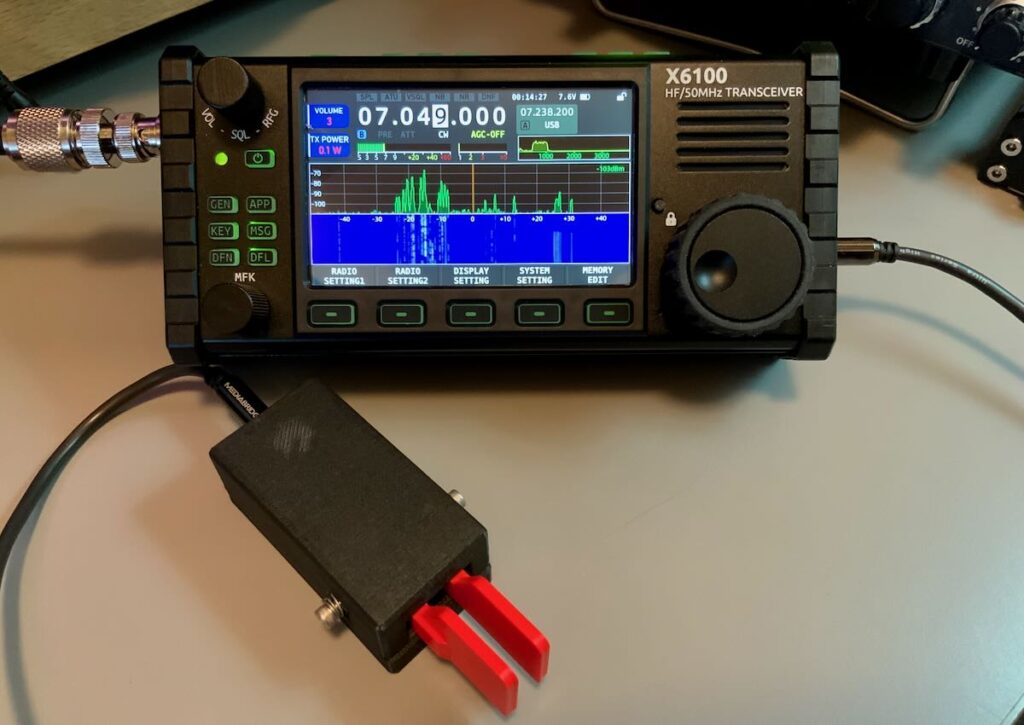 The X6100 was designed to be price-competitive and to have ample performance and a tool set to please the low-power ham radio field operator. I feel like it’s a success in this regard. When I’m in the field performing a park or summit activation, I’m typically far removed from urban RFI and blowtorch broadcasters. The field operations I’ve performed so far with the X6100 (mostly in CW/Morse Code) have been quite successful and enjoyable.
The X6100 was designed to be price-competitive and to have ample performance and a tool set to please the low-power ham radio field operator. I feel like it’s a success in this regard. When I’m in the field performing a park or summit activation, I’m typically far removed from urban RFI and blowtorch broadcasters. The field operations I’ve performed so far with the X6100 (mostly in CW/Morse Code) have been quite successful and enjoyable.
I hopes this helps! Again, I’ll have more detail about the Xiegu X6100 in my upcoming detailed review in The Spectrum Monitor magazine. If you’re interested in how the X6100 performs as a QRP transceiver in the field, check out my reports on QRPer.com.
Thank you!

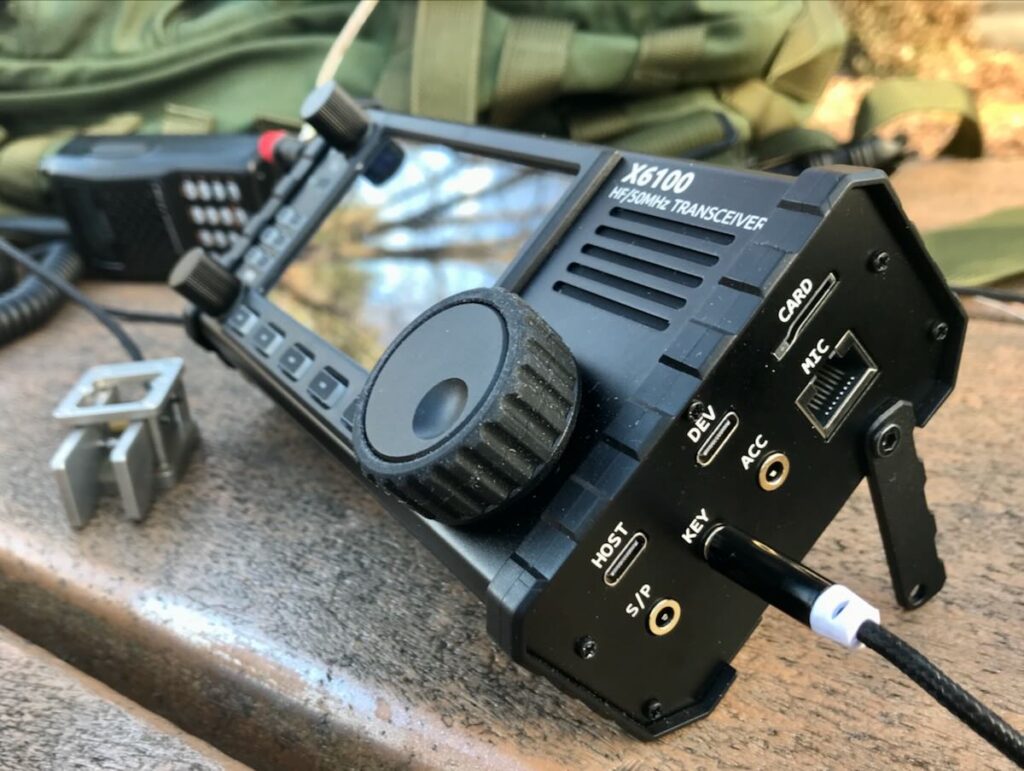
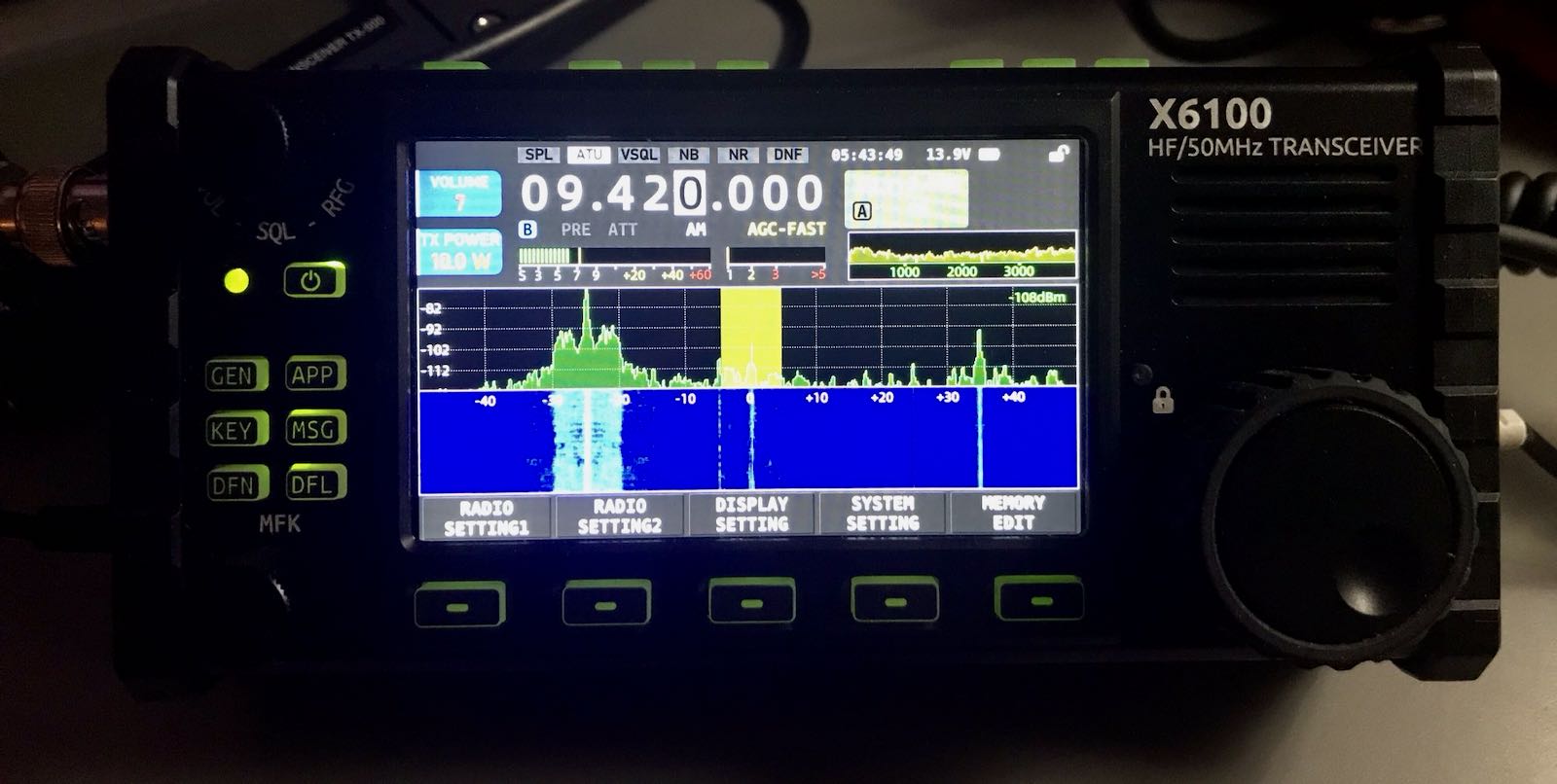
Could you use the x6100 to tune an antenna for use with a SDRPlay receiver?
Hi, Mark,
No, I can’t think of a way that would work because the X6100’s ATU is internal. If it were external, it would be a possibility.
If you’re looking for a good external ATU for the SDRplay SDR, I would encourage you to check out the manual ZM-2 ATU by Emtech. It’s superb, affordable, and available as a kit or assembled. Having a manual tuner gives you control to find an impedance match without injecting a signal. Perfect for receivers.
Cheers,
Thomas
Thank You!
Is that imaging derived from MW BCB? If HF is the primary interest, a MW highpass filter is simple enough to add. Otherwise I know it is annoying to add larger external components, especially in the field, but it sounds like a passive preselector could help. The MFJ-1048 comes to mind, again at least for HF.
“You can’t fault Xiegu as you mentioned; they position the X6100 specifically as a ham transceiver.”
How is this different from how Icom designed & markets the 705? After reading these comments, I went back to Icom’s 705 brochure & don’t see anything that it was anything more (or less) , than a ham transceiver.
Thanx for the reveiw – Bob
Exactly! That’s the beauty of the situation for the ICOM IC-7300 and the IC-705. I’ve owned both and although ICOM never stated these models are suitable for non-ham band frequencies, each work very well on SWBC bands as well as longwave and medium wave.
Its been many years since a new communications receiver has come to market (traditional, not SDR). However, the SWLing community is embracing certain transceivers with excellent receiver sections that work well on all HF frequencies and below.
BTW, to read of a modification that improves the 705 transceiver’s noise reduction, see my article: https://qrper.com/2021/08/upgrading-the-icom-ic-705-with-bhis-amazing-noise-reduction-module/
The Yaesu FTdx-3000 is another transceiver which doubles as a top-notch communications receiver, and is the model I currently use when I get tired of “mousing around” with the Perseus or other SDRs.
A search of this web site will reveal a number of articles on the topic of using certain ham transceivers for SWL or BCB DXing purposes.
Thanks for your assessment, Thomas! Sadly, that’s what I expected after the first reports of between-the-bands overloading came out.
You can’t fault Xiegu as you mentioned; they position the X6100 specifically as a ham transceiver.